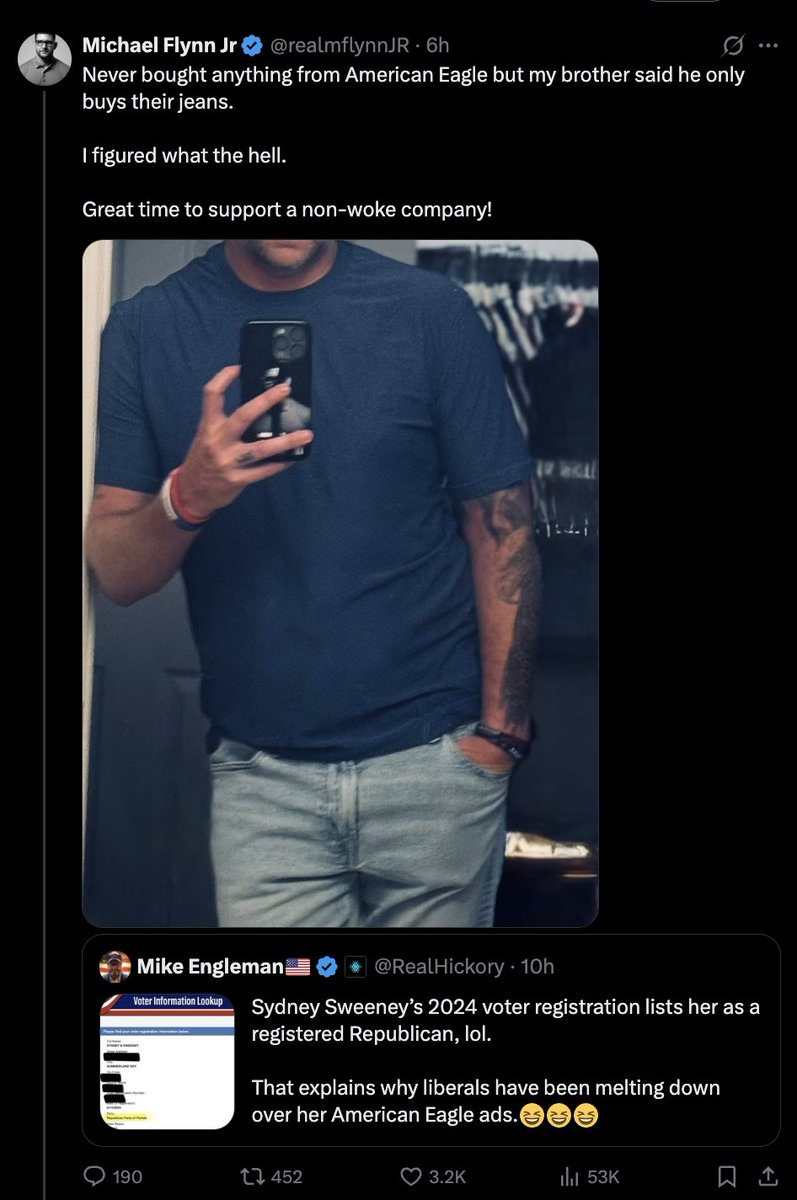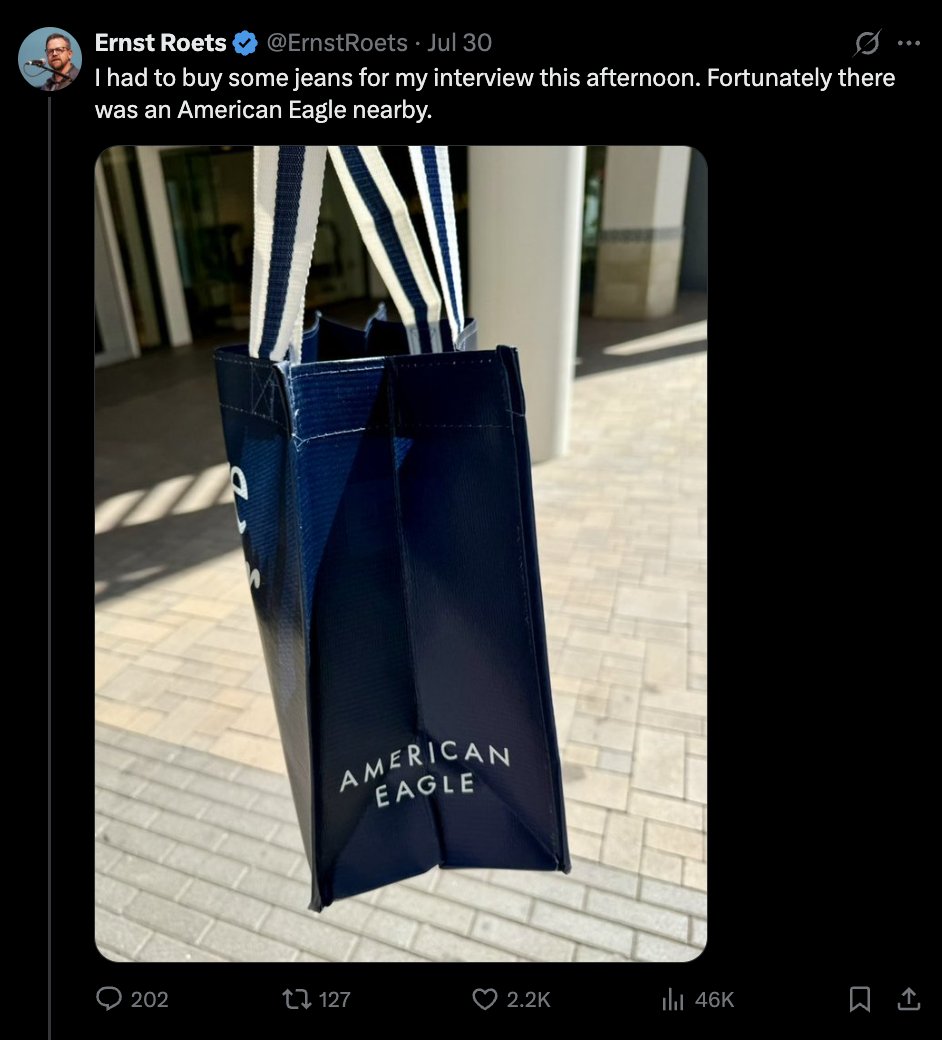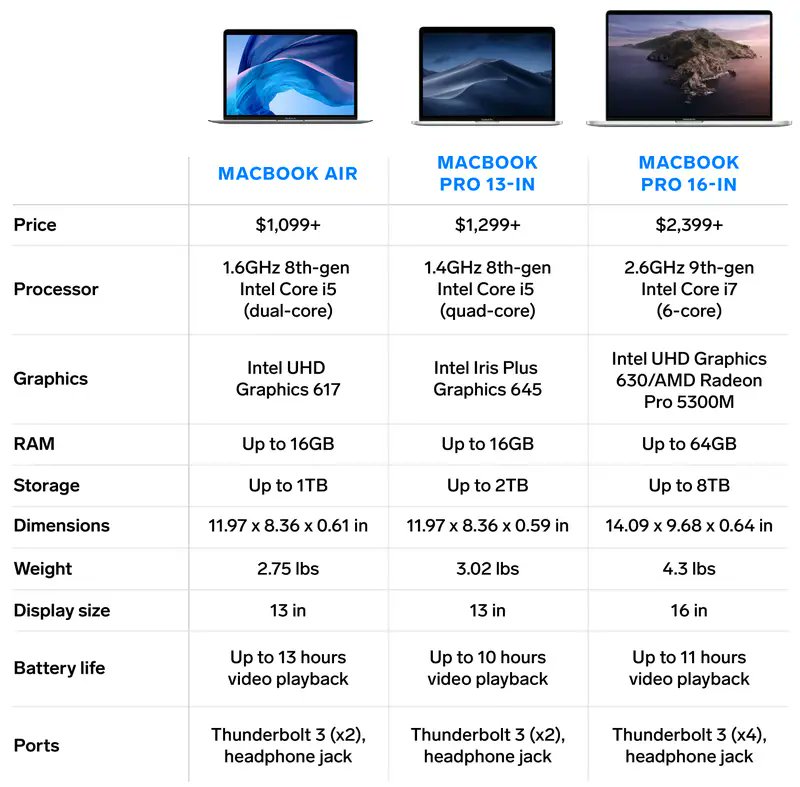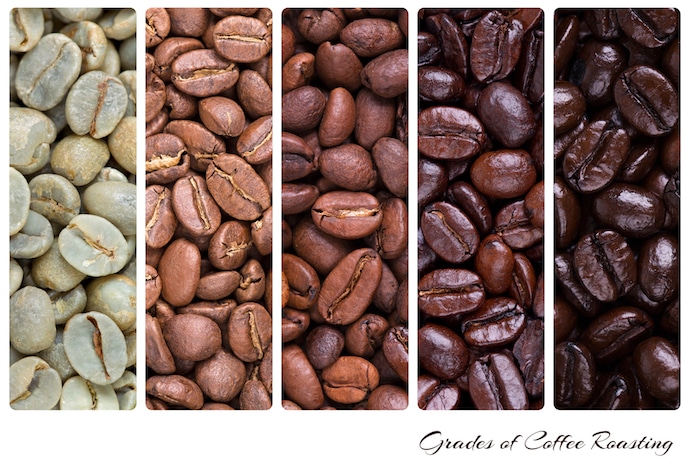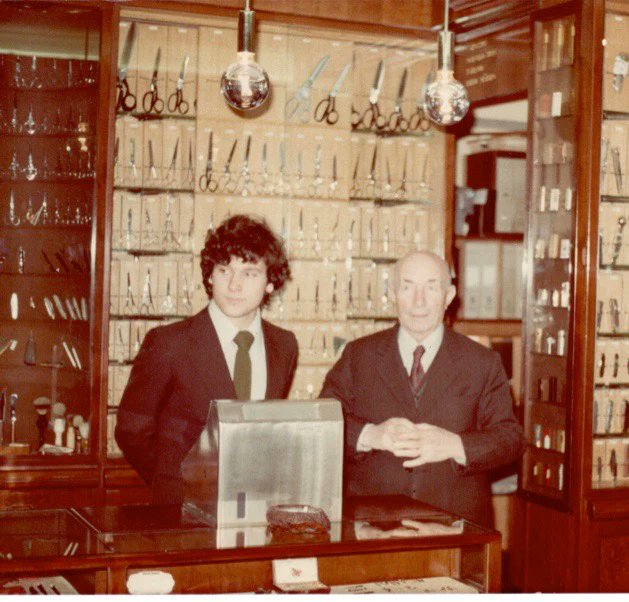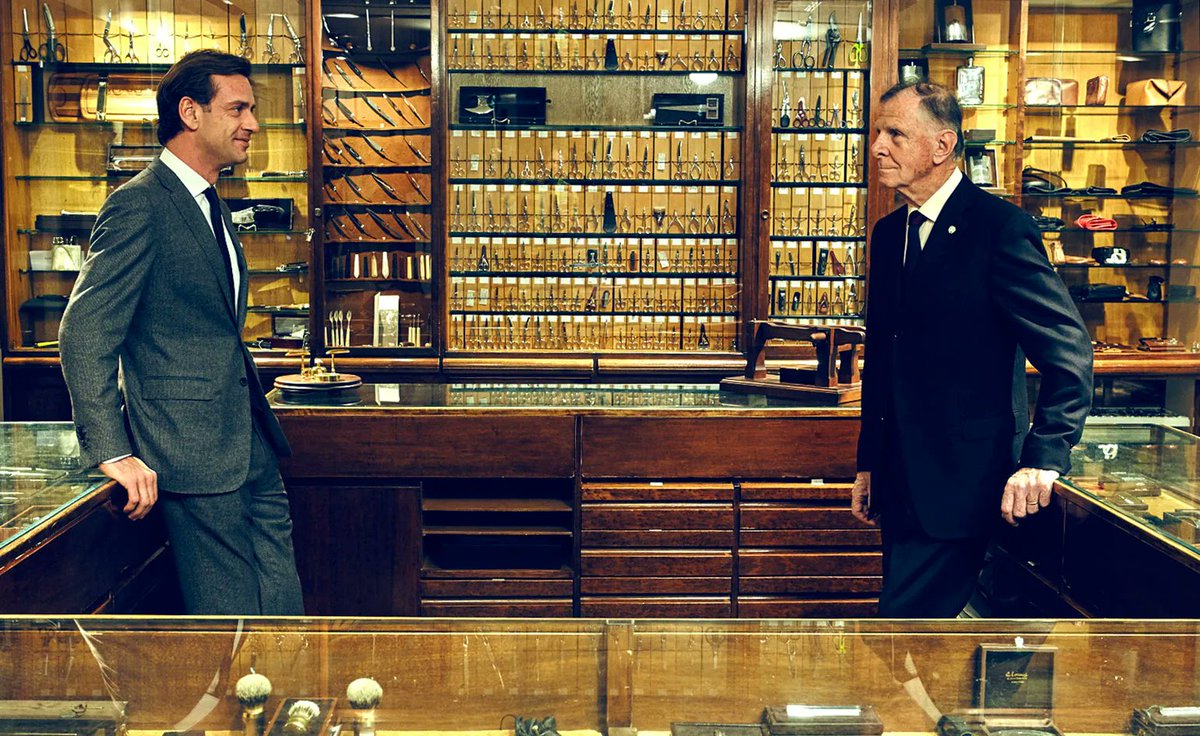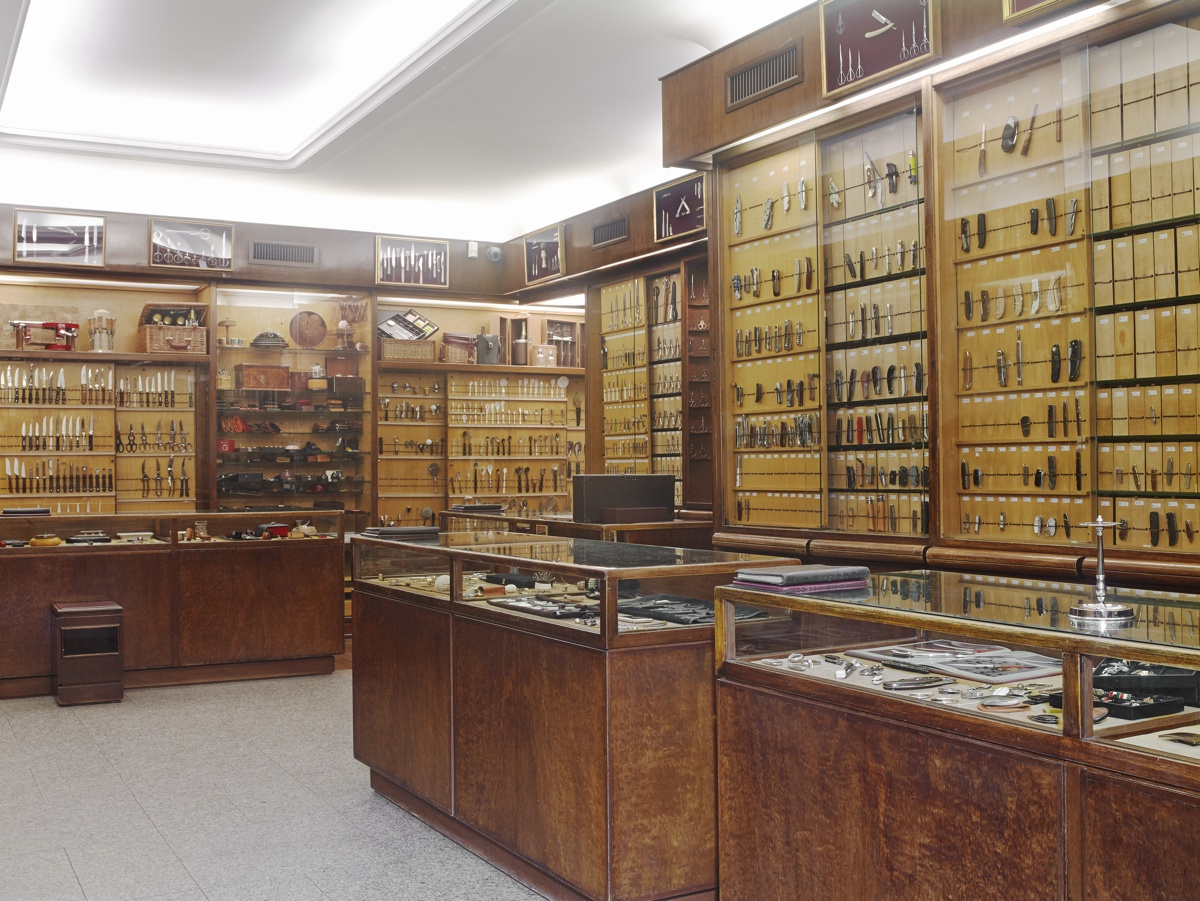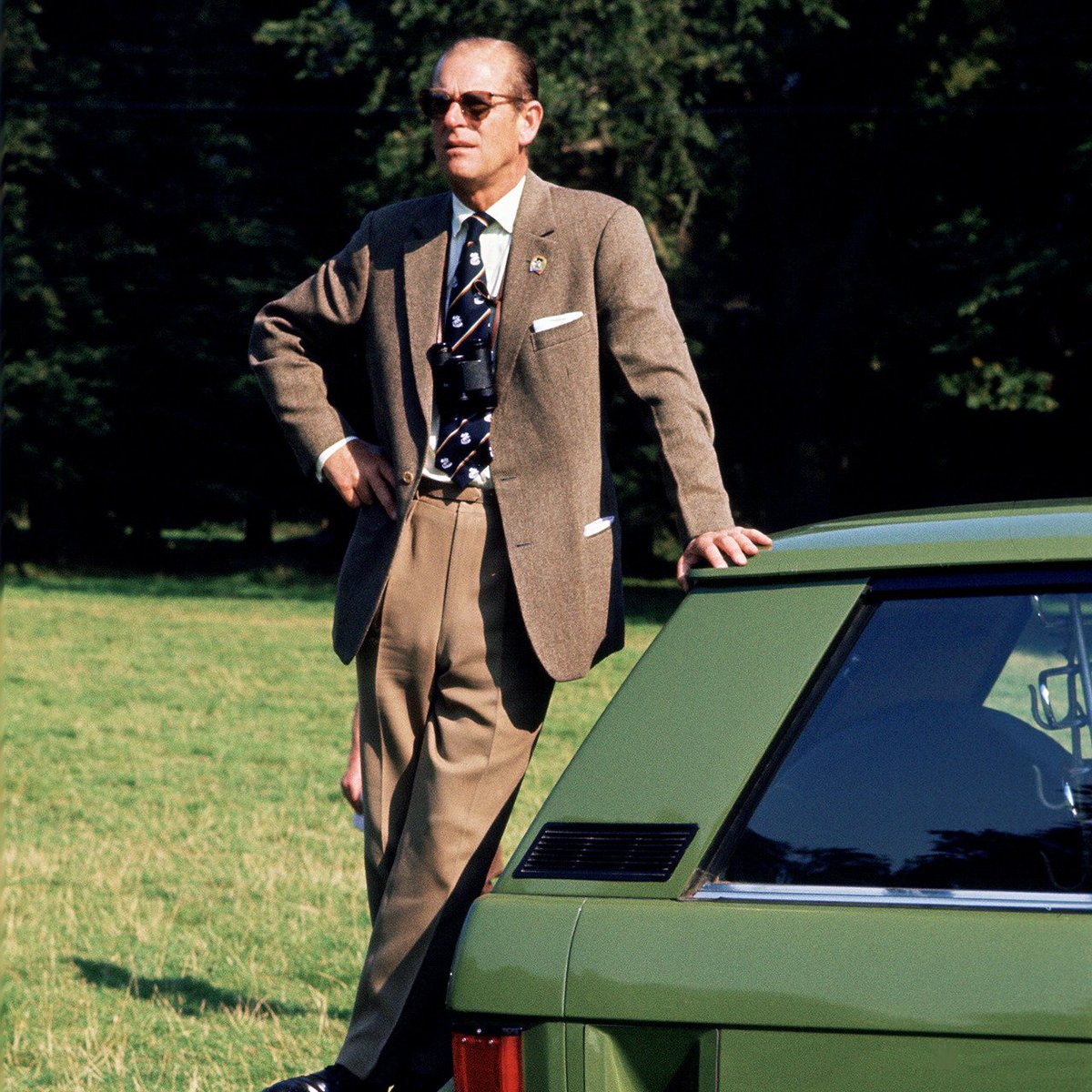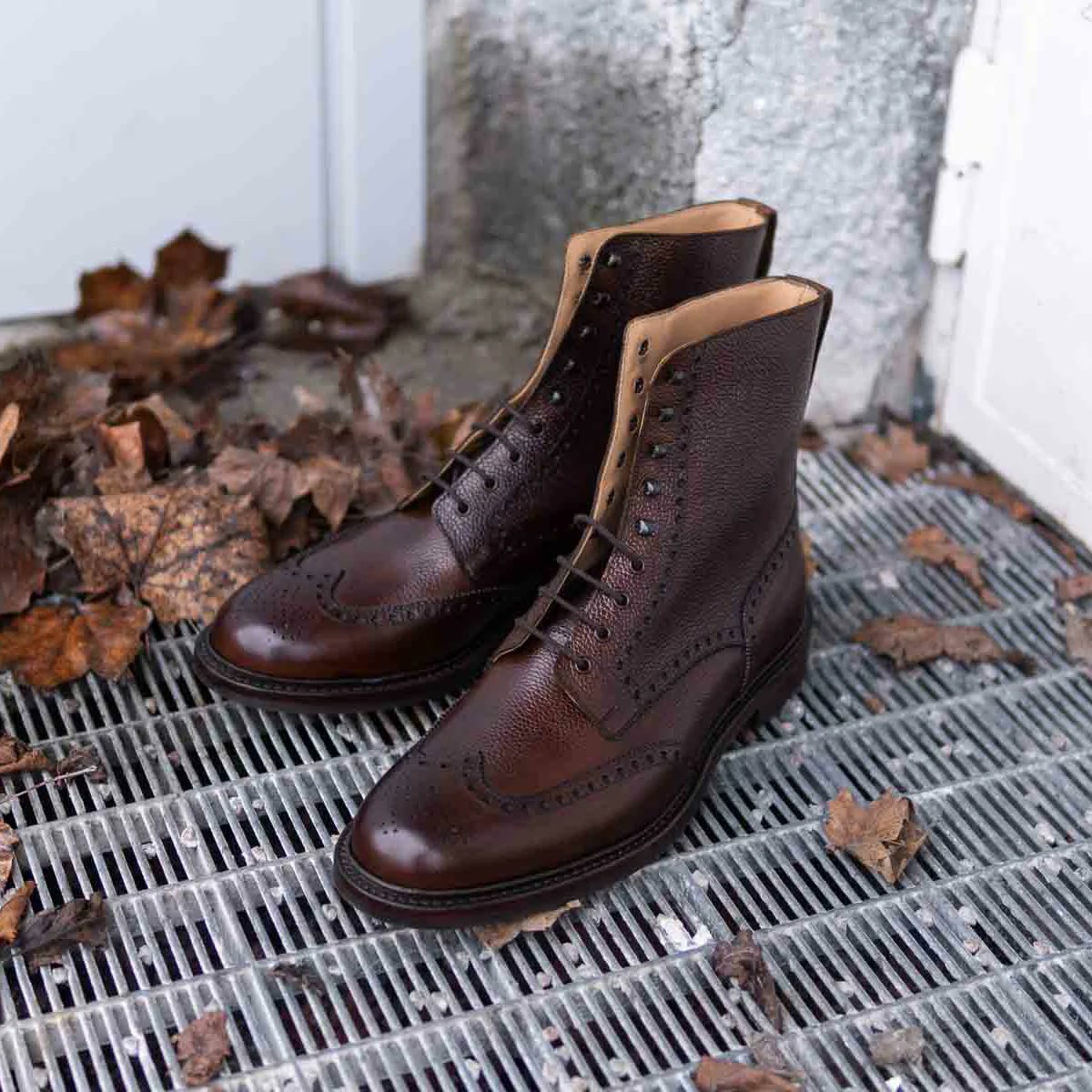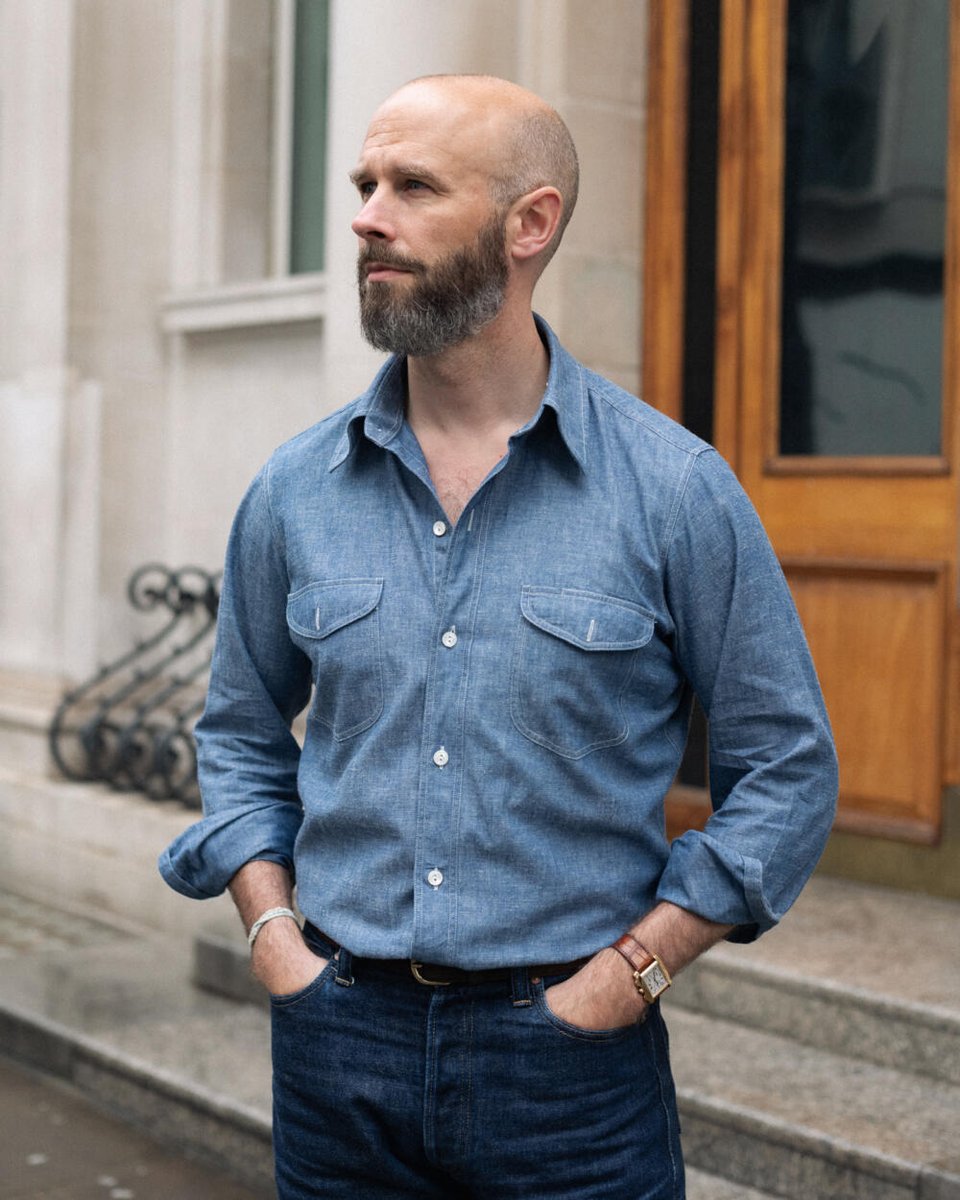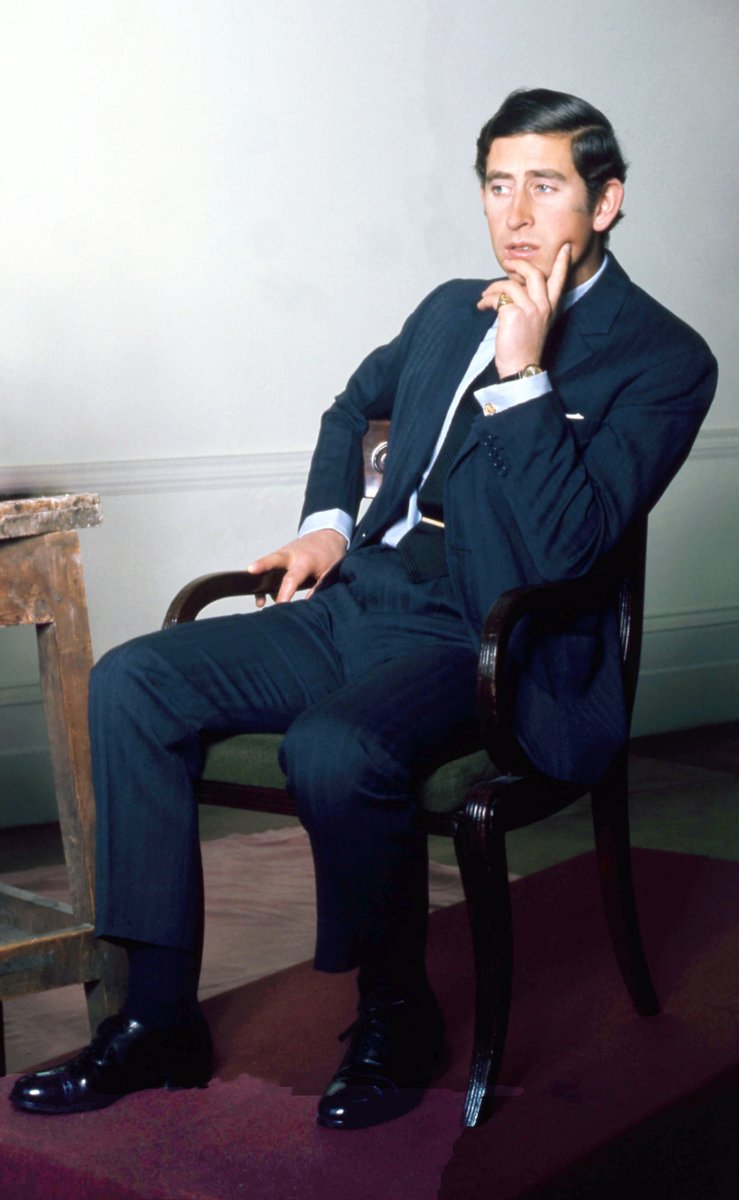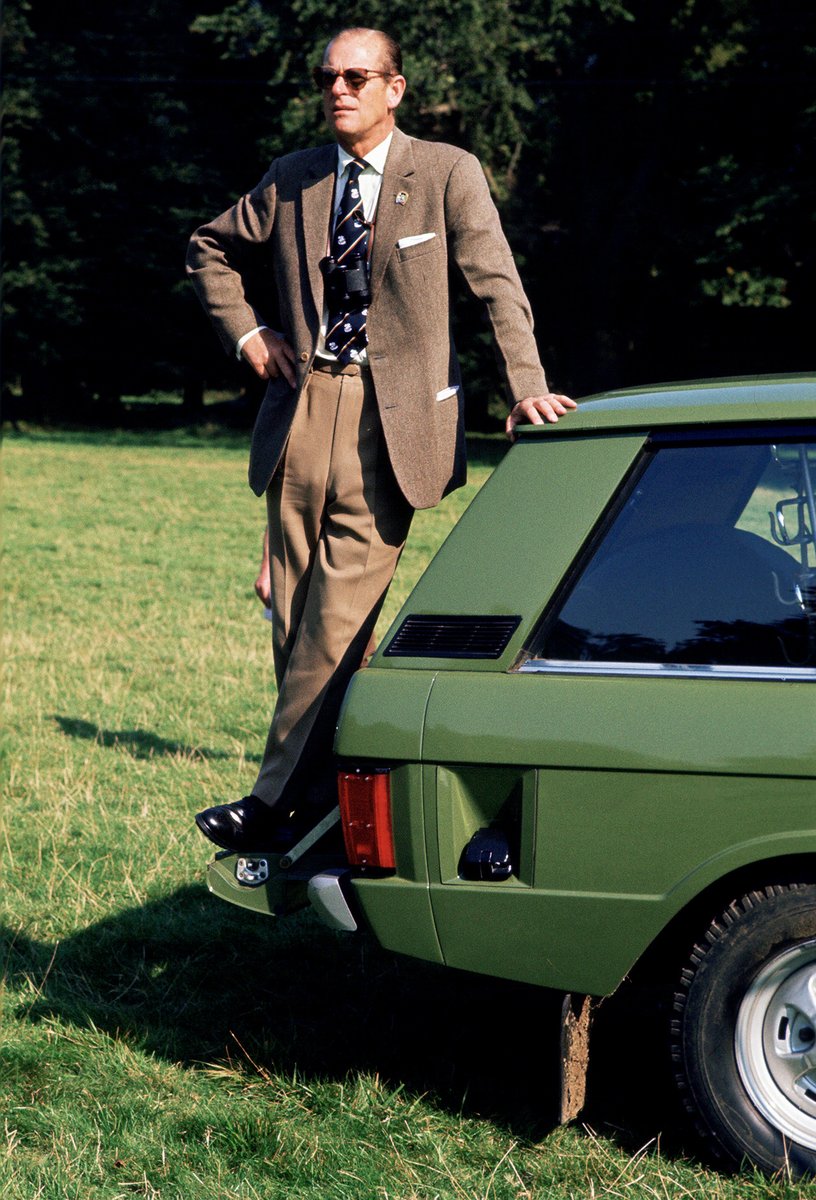Want to answer this question because I think my account has made some people interested in custom tailoring, and I'm afraid they're going to waste their money on bad purchases. 🧵 
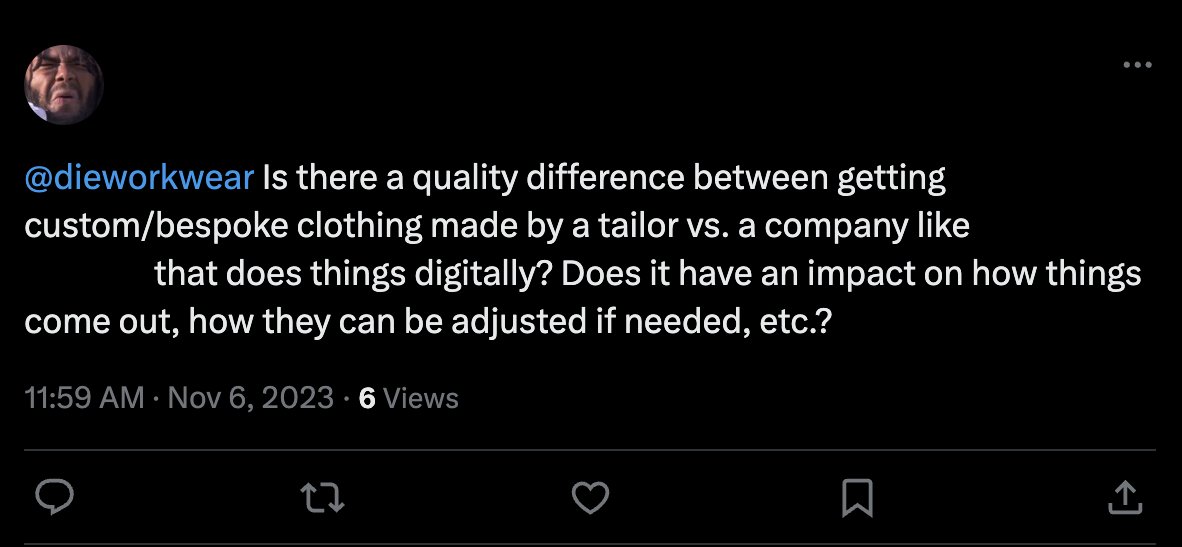
I often get emails from people who are getting married and want the best suit possible for their big day. So their instinct is to spring for a custom suit. They assume that custom is better than ready-to-wear (RTW). This is a mistake.
It may be that you need custom, but custom need not be better than ready-to-wear.
Here are two garments made by the same company. One is bespoke; the other is RTW. Can you spot the difference?
(Ignore the shirt cuff. Adjusting a coat sleeve is a trivial job for alterations)
Here are two garments made by the same company. One is bespoke; the other is RTW. Can you spot the difference?
(Ignore the shirt cuff. Adjusting a coat sleeve is a trivial job for alterations)

Answer: the bespoke coat accounts for the wearer's asymmetrically sloped shoulders. RTW does not, so there is some collapsing around the rib cage on the wearer's right side.
But this, too, can be adjusted through alterations. Just have to take a wedge out of the shoulder.
But this, too, can be adjusted through alterations. Just have to take a wedge out of the shoulder.

If you adjust the ready-to-wear coat above in this way, the two coats would be identical. The challenge, then, is for you to recognize when a garment fits.
If you go to a skilled tailor, they will take care of these details for you. But this assumes you have a good tailor.


If you go to a skilled tailor, they will take care of these details for you. But this assumes you have a good tailor.


In fact, most custom tailoring is quite bad. The downside of custom tailoring is that you can't put things back on the rack if they don't fit. Any operation that offers a money-back guarantee is a bad tailor that's banking on the probability you won't know the difference.
A lot of custom tailoring on the market is made-to-measure (MTM). And while good MTM exists (and can be better than bad bespoke), there are also a lot of bad MTM operations out there.
What's the difference between bespoke and MTM?
What's the difference between bespoke and MTM?
Bespoke means a garment is made from scratch. The pattern is (theoretically) drafted for you from scratch. The garment is then made through a series of typically three fittings.
MTM is made by digitally adjusting a pre-made block pattern. Garment is made straight to finish.


MTM is made by digitally adjusting a pre-made block pattern. Garment is made straight to finish.

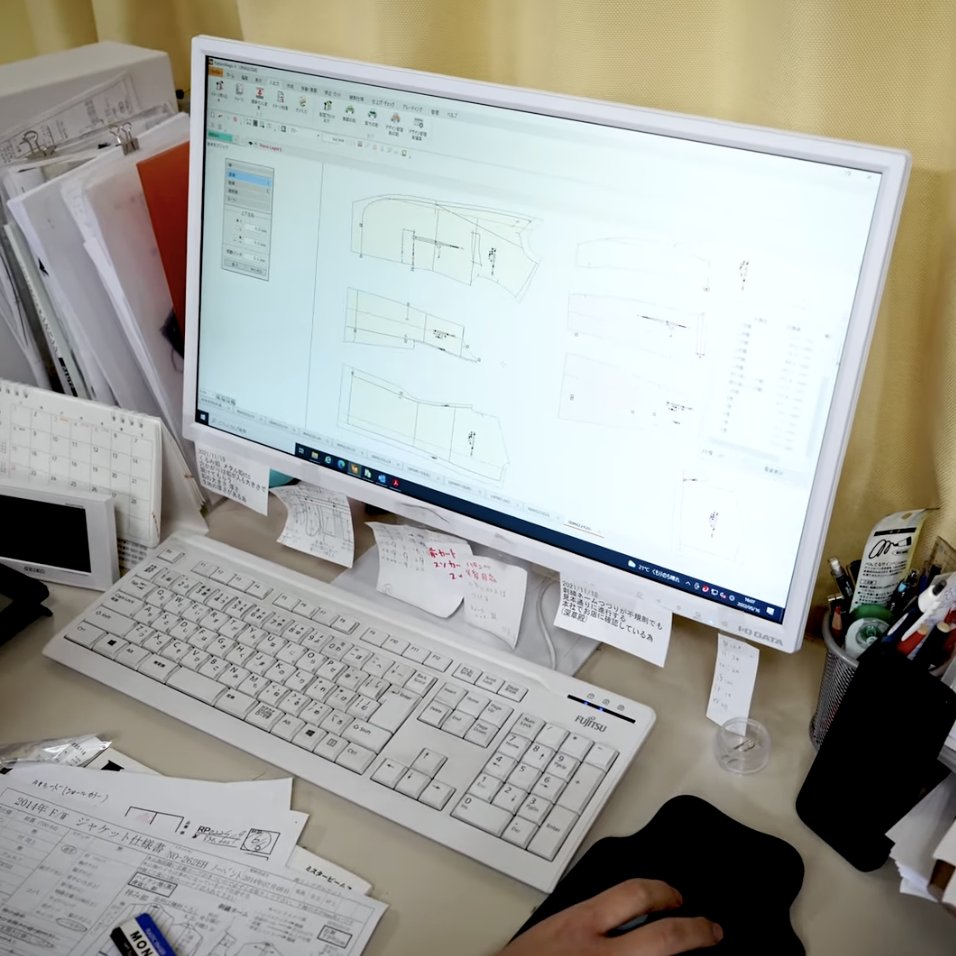
A lot of MTM operations out there, particularly those charging less than $1k for a suit, are using trendy pre-made block patterns. That means short, tight coat and very slim pants. This can be great if you're built like a Saint Laurent model, but most customers are not. 

This is how you wind up with so many of the things I mention on this account:
- Collar gap
- Lapel buckles from chest
- Shoulder divots
- Pulling at the buttoning point
- Shirt fabric shows below buttoning point
- Overly high buttoning point
- Pants cling to legs
Etc etc etc


- Collar gap
- Lapel buckles from chest
- Shoulder divots
- Pulling at the buttoning point
- Shirt fabric shows below buttoning point
- Overly high buttoning point
- Pants cling to legs
Etc etc etc


Such problems are exacerbated when you buy custom tailoring online because you no longer have an experienced fitter helping you figure out what needs to be changed. Adjusting a custom garment is not trivial. Changing one part can cause problems in other areas.




There are many reasons to go custom:
- You value craftsmanship for its own sake
- You like a certain tailor's house style
- You have an uncommon build. For example, if you have a size 46 or 48 chest, you probably need custom. If you are over 6'4", you also prob need custom.
- You value craftsmanship for its own sake
- You like a certain tailor's house style
- You have an uncommon build. For example, if you have a size 46 or 48 chest, you probably need custom. If you are over 6'4", you also prob need custom.

The chance of you being one of those builds is small. You are probably a good fit for ready-to-wear adjusted through alterations. The upside of RTW is that you can put things back on the rack if you don't like it. Some RTW options I like:
dieworkwear.com/2020/09/25/whe…
dieworkwear.com/2020/09/25/whe…
If you want to go custom, choose a tailor whose house style you like. Ideally, you've seen their work on real people (not models). Better still if those people have a similar build as you. Don't assume that custom automatically means "better."
If you do MTM, ask the shop if they have try-on garments. These are ready-made garments produced on the block pattern. By trying these on first, you can see:
- Do you like the general silhouette on you
- How far are you from the block. Fewer adjustments = better
- Do you like the general silhouette on you
- How far are you from the block. Fewer adjustments = better

Online made-to-measure can be fine for simple garments like shirts. They are much more risky for things like suits, sport coats, and even trousers. Try ready-to-wear first. Identify your specific fit challenges and see if they can be solved through alterations.
• • •
Missing some Tweet in this thread? You can try to
force a refresh



